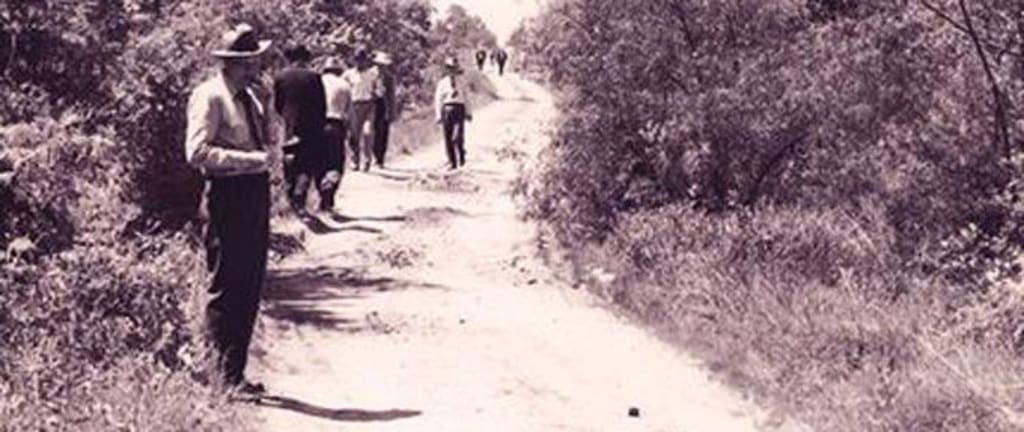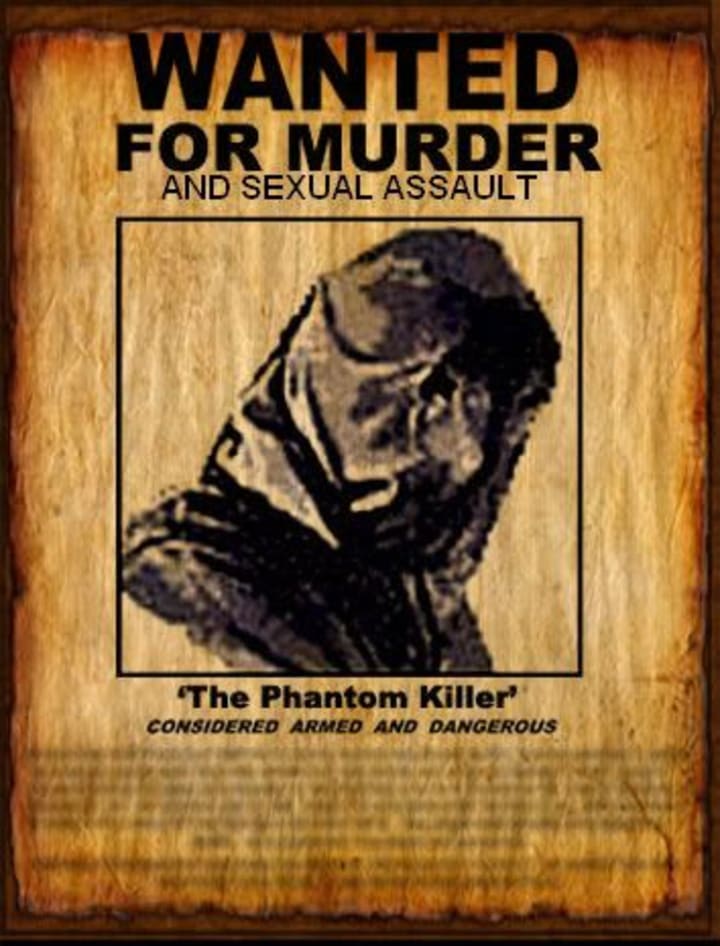Unsolved Murders That Will Make You Think
Part 3: The Moonlight Murder

Background Info:
The "Texarkana Murders" or the "Moonlight Murders," are a series of unsolved murders and other violent crimes that took place throughout 1946 in Texarkana, Texas. Early on the killer was given the nickname "Phantom Killer" as no one had seen or even heard while committing his crimes. The Phantom Killer, in total, killed five people and injured another three within a ten week time period. The killings were so brutal, that a curfew was enforced, police patrolled the streets, and the killer remained killing. The patrols stopped three months after the last murder.
Crimes:
February 22nd, 1946, Jimmy Hollis and Mary Larey were parked at the local "lover's Lane" when they were attacked. According to the victims, about ten minutes after they parked, a man walked up to the driver's side window wearing a white cloth mask, and shined a flashlight down on the young couple. The man told them "I don't want to kill you, so do what I say." He then made Hollis put his pants around his ankles and then struck him in the head with a pistol, knocking him out. After knocking out Hollis, the attacker then hit Larey in the head with the pistol putting her on the ground. When she stood up, he ordered her to run away. While she ran away he followed her until she fell down. When she did, the attacker stood over her and asked her why she was running, and she responded telling him that he told her too. The attacker then got upset and struck her again with the pistol. While she was on the ground this time, he sexually assaulted her with the barrel of the pistol. Once he had left, Larey had gotten to her feet and woke the residents of a near by home and was able to call the police. While in the hospital, Larey and Hollis were questioned by the police, but their descriptions of the attacker were different. Hollis claimed that they attacker was African American and 6'5" tall. Larey claimed that it was a white male that was 5'11" tall. The inconsistencies lead to the police wondering if the couple knew their attacker and were covering for him. All in all, this couple was lucky to survive the attack,
On Mach 24th, 1946, Richard Griffin and his girlfriend Polly Ann Moore were found dead in his car. The vehicle was located at "Lover's Lane." Reports stated that Griffin was shot twice in the back of the head, but more was only shot once. It appeared that Moore was taken out of the vehicle as her body was found outside the car. Police were able to find .32 caliber shells from a Colt pistol on the driver's floorboard of Griffin's car.
At this point, the police and state troopers launched a state wide manhunt/investigation that even involved the F.B.I.. The police also offered a $500 reward for any helpful information, but none of the leads that were received panned out.
The night of April 13th, 1946, Paul Martin picked up Betty Jo Booker from her saxophone performance at 1:30am. Martin's body would be found five hours later by a local family that was walking that morning. Police revealed that he was shot four times. Once bullet went through his nose, another went through his ribs, the third went through his hand, and the final bullet went into the back of his neck.
Booker's body was found at 11:30am that morning almost two miles away from Martin's body. Booker had only been shot twice, once in the chin and the other in the chest. Police claimed that the same caliber pistol was used in this double murder as the previous one. The reward for any useful tips went from $500 to $1,700. Police also asked the general people to stop circulating rumors.
The last crime was committed on May 3rd, 1946. Katie Starks was laying in bed and heard a noise from outside that she claimed to be shattering glass. Katie asked her husband to go outside and check out the suspicious noise. Before Virgil could stand up he was shot in the back of the head twice from outside. Katie again heard the shattering glass, but did not stand up quickly as she thought that Virgil had dropped a glass. Slowly she stood up and went to check on her husband, but found him dead in the living room. Katie ran to the phone to call the police but before she could finish dialing she was shot in the face twice. Katie claims that at this point she fell onto her knees but then stood up and grabbed a pistol. She fired six shots through the back door. The killer broke down the front door and chased Katie around the house, but she managed to avoid him long enough to get out of the house and run down the street for help.

Arkansas State Police arrived on scene before the Texas State Troopers were able to get there. When police arrived on scene, they found Virgil partially on fire as he had a heating pad on his back that had caught his chair on fire. The next move was setting up blockades on every state line hoping to catch the killer.
When the investigators arrived on scene, they reported that he blood and teeth were scattered throughout the house and said it was a miracle that she's alive. Investigators also reported that this time, the killer used a .22 caliber semi-automatic rifle. Investigators also found a flashlight under the window that Katie had never seen before.

Suspects/Investigations:
Police brought in over 400 potential suspects and believed that the killer was a sex maniac as none of the victims had been robbed, but all female victims had been sexually assaulted.
For the Griffin and Moore murders, three suspects were brought in wearing white clothes that were covered in blood, but all three victims were released as they all work at a meat processing plant. For the Martin and Booker case, a taxi driver that was close by was brought in for questioning, but he was cleared of any allegations.
One day while on patrol, an Arkansas State Trooper found a car that had been stolen on the night of one of the murders. The Trooper decided to watch the car and wait to see who came back to it. Peggy Swinney ended up coming back to the car and was immediately arrested. She claimed that her new husband had stolen the car. Police asked her where he was at the time, and she stated that he was in Atlanta selling a car that he had just stolen. Peggy however refused to give up her new husband's name. The Chief of Police had an idea to counter this though. He was to walk around the city with the owner of the car and see who reacted to seeing the owner.
The plan worked as they chased down Youell Swinney began running away from them. Chief Tackett chased Youell down and made the arrest. After being arrested, Youell made many incriminating statements that led police to believe that he in fact was the killer. Swinney's wife had also confessed that he had killed Betty Jo Booker and Paul Martin. Police were also able to get a lot of circumstantial evidence that tied him to each crime scene. Police were counting on Peggy Swinney testifying against her husband. Peggy however would not testify against him. By law in 1946, police were not able to push a wife to confess against her husband in court.
Youell ended up not being charged with the murders, but was sentenced to five years for the stolen vehicles. Many people think this was a plea bargain as police were going to charge him, but had no real evidence to support them.
This is quite an interesting case that shows how strong people can be. Unfortunately the real killer was never arrested or charged with the murders.







Comments
There are no comments for this story
Be the first to respond and start the conversation.